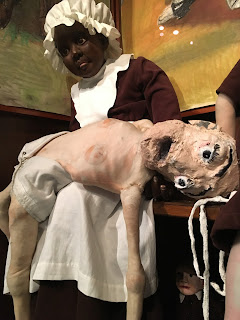For our most recent project, we were given the title 'Let there be light, a photography project in which we had to explore the different ways light can be captured through photography. My initial reaction to this project, was a very daunting feeling when I heard the word 'photography', as it is a medium I have never really experimented with before.
For the first part of this project, we were put into groups into groups of five. Individually, we then had to take a series of twelve images of an object that we had found, capturing it in an abstract way. In our groups we then had to take two images from our twelve images and put it into a different presentation of twelve images. The final part to this project, was choosing two images all together as a group, which we thought worked the most successfully as a pair, whether that be depending on their colour, darkness etc.
My work
I was slightly hesitant about how to begin this project, as I was very unsure about what I could photograph. However, as I was looking around my house for objects, I found a glass mug shaped into the face of a skull- initially I was going to choose something less complex, like a glass bottle or a mirror- however, I thought that the lines and shapes on this mug conformed in a very interesting way. It also had a very different orange tones to it, which I thought could be interesting when photographed.
The first part of this process, was actually photographing the mug, in which I used my iPhone to take the images- I thought that capturing my images would be a lot easier on an iPhone, as its a lot lighter to hold than a camera; allowing me to take pictures more comfortably. I began by putting the mug in
lot of different positions, upside down, and to its side- whilst holding the phone very up close to the mug- creating these very abstract, distorted images.
In developing these images furthermore, I used then used Photoshop to edit, and adjust their colour, turning up their saturation, and turning down their highlights. I knew that by doing this these images would look more powerful, and striking in their colours and shapes.
What worked successfully?
Overall I am extremely pleased with the outcome of these images; I found this project very interesting, as it was slightly out of my comfort zone however, I still feel that I managed to create some very interesting images with the object that I had found. I also like the way these images are very glossy and shiny in their appearance, they sort of resemble honey or syrup dripping down in different ways.
Below are some of my favourite images that I took.
Group work
In terms of improvement for this project, I feel that our group, including myself could have been a lot more organised; as it felt very rushed towards the end. However, despite this we did end up choosing two final images.
























































